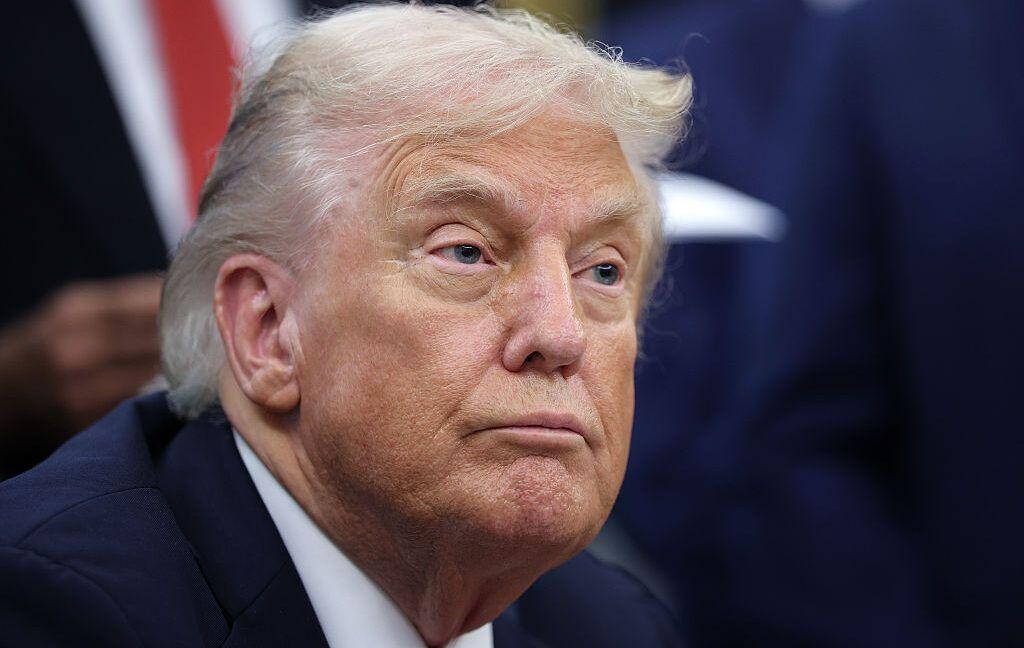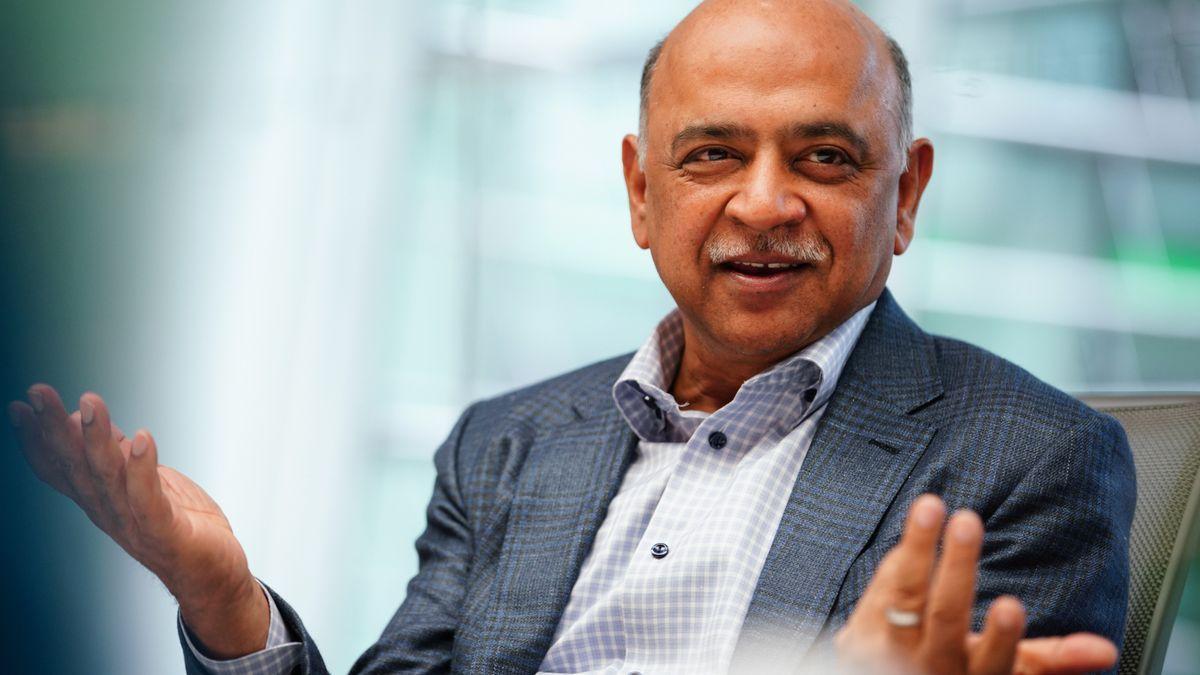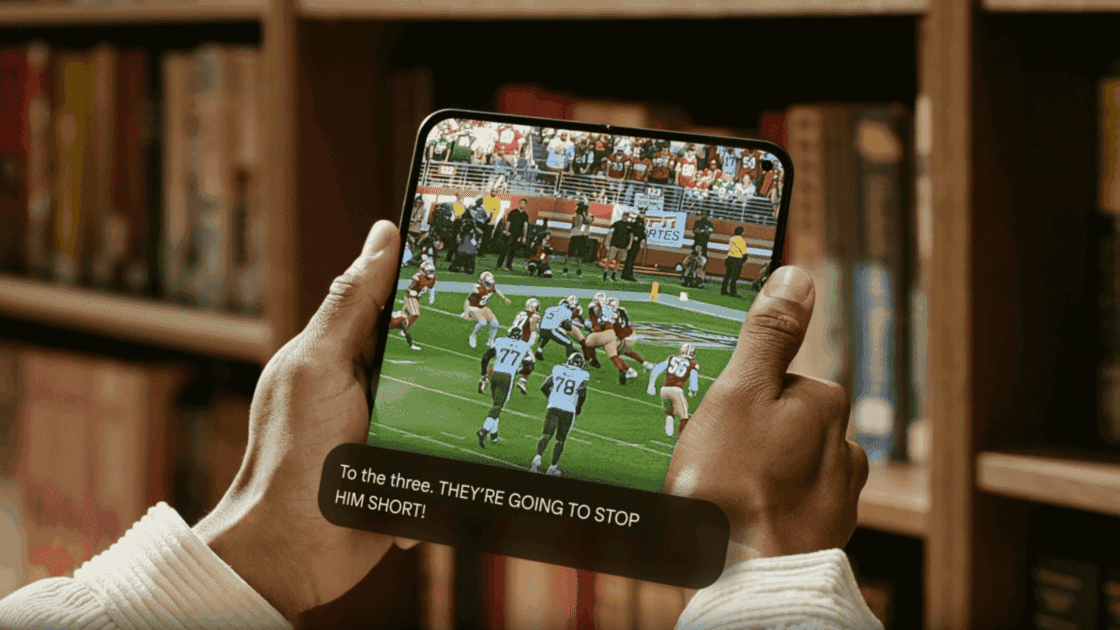The Evolution and Future of Typography in Design
2 Sources
2 Sources
[1]
The future of typography - the pros share their predictions
As AI reshapes numerous creative industries, where is typography heading? While some designers envision a future where AI accelerates creativity and expands typographic possibilities, others worry about the homogenisation of design and the loss of human jobs. After all, its disruption of the creative industries so far has been brutal in many ways. At the same time, AI so far hasn't really changed typography in the same way it has copywriting and illustration, as we discuss in another Typography Week article 'How AI is changing typography design'. So is it even capable of either creating custom typefaces or arranging them in typographic design? To get a sense of where things are heading, we spoke to experts from up and down the design industry about AI's current capabilities, potential applications, and the questions all of this raises (will it render even the best free fonts useless for those not wanting to make or license a font?). Also be sure to read our article on 'Key skills typographers will need to develop in the age of AI'. From copywriting to illustration, AI is helping to automate the creative process right now. So why not type design and typography? Carl Wills, design director at Landor, offers a glimpse of what that might look like. "Imagine sketching a font concept, fuelled by late-night inspiration, and having AI tools translate those rough strokes into a refined digital typeface, ready for exploration and refinement," he posits. "This is the magic of AI at work - not replacing the designer's vision but accelerating the journey from imagination to tangible reality." In more immediate terms, his colleague Gianluca Ciancaglini, a design director and typography specialist, breaks this down into three realistic scenarios. The first is enhancing research. "AI tools will make it possible to collect and analyse data faster and faster, with the possibility of developing increasingly accessible typefaces." The second is simplification of processes. "Technology will help speed up and simplify the more technical parts in developing typefaces. The implementation of AI will make it possible to create increasingly unique and customised typographic solutions, adapting better and better to the goals and (future) needs of brands. And the third is variability. "Typography will be seen as an increasingly variable, living, dynamic and non-static tool," says Gianluca. "This will enable better experiences for users." Technically, it's likely that AI tools will soon develop that do all these things and more. But, crucially, will designers want to use them... and should they? Jessica Walsh, the well-known designer and studio head who's recently launched her own type foundry, Type of Feeling, takes a nuanced view. "I think that AI can have a positive effect on the creative industry in that it has and will continue to democratise creativity and entrepreneurship by breaking down financial, time, social, and geographical barriers to creation," she begins. But she adds that this can be either a good or bad thing. "On the one hand, anyone with a great idea or eye for creativity can more easily make things. On the other, I have been witnessing laziness with AI. People taking something AI spits out and using that work exactly as Chat-GPT or Midjourney delivers it. "In my opinion, we are still in the phase where AI should be used for ideation, to spark ideas but not to deliver the final product," she concludes. "I'm getting bored already of the tone and look and feel of everything from AI-generated programs. It's a tool but not the end all." Carl Wills agrees. "The danger lies in mistaking rapid iteration for genuine innovation," he argues. "It's easy to get swept up in the whirlwind of AI-powered possibilities, churning out endless variations without pausing to consider the 'why' behind the 'what'. The true test of AI-augmented creativity lies in our ability to wield its power with intention and purpose." The question of whether designers should use AI provokes another question: why does nobody seem to want to? As Simon Manchipp, founder of design practice SomeOne, point out: "The opportunity for AI to reduce the pain of more tortuous aspects of typography like kerning pairs is obvious; however, this doesn't seem to be a hot topic yet." He muses that "perhaps AI will be valuable in languages like Mandarin due to the large number of characters, but for Latin I'm reliably informed there are already good established tools, if the goal is just to save time in spacing a font well." He can still imagine that in future, AI could open new horizons for typographic levels of innovation, control and hyper customisation. "Yet I'd argue we can do much of this right now," he counters. "The new custom brand typeface we've worked on for Co-Op does just that," he continues. "It carries a multitude of vigorously considered, beautifully crafted and easily deployed design thinking, custom cuts and textures abound, it's fully ownable to the brand, it'll still work if the internet can't be accessed, it looks constantly great - and it was designed entirely by humans at SomeOne and F37 Foundry." That said, he still sees potential in AI to make designers' life easier. "For example, on the dull, legal but essential commercial side, the licensing of typefaces is already perilously complex and financially wildly inaccessible to many smaller brands," he points out. "AI blended fonts or custom cuts that remove this pain-point could see quite a leap in popularity - Google Fonts can only do so much." Given the strides that large language models and generative AI have taken with text and images, you'd imagine that AI could design typefaces by now too. And Zeynep Akay, type designer and creative director at Dalton Maag, notes that: "There are people experimenting with AI type design already. And a fully realised generative engine is probably not too far off." But are the fonts any good? "The results I've seen so far seem superficially convincing," she replies. "But upon a closer look, they fall apart at the seams for either a lack of systematic consistency, which underlies any good type design, or a lack of refinement and quality. And the inherent problem that exists in other creative fields exists also for type design. What are the datasets used to train these engines, and is the human effort behind those datasets properly credited, if not compensated?" In short, when it comes to creativity, current technology can't surpass what humans have been able to do. "A neural network can't truly replicate the way humans see the world; it will always have a different, more alien-like perspective with which it will shape the images it generates," she reasons. "And, of course, it cannot - yet - produce uniquely new results; it's limited by its dependence on human-made inputs to train it." Will it be able to in future? Maybe. But even if it does, it's likely that both designers and audiences will push back. After all, that's what's already happening with other uses of AI in the creative industry. "While the benefits of automation and AI abound, I've heard more than a few calls with those paying for the design work that begin with, '...and none of that AI stuff please'," reveals Simon. "Just as many have been repelled in as much time as it took them to be attracted to Midjourney visuals and ChatGPT texts, full of lists with predictable structures. So I wonder if there'll remain a firm place in the design repertoire for letterforms originated, crafted and created by human hand?" Indeed, even before AI gets its on typography, there's already a broad feeling that type has become too homogenised already. "Websites appear cut from the same mundane cloth of 'best practice'," complains Simon, "where the differentiating delights given through distinctive brand assets such as Cassandre's masterfully typographic YSL wordmark, quirky Rimowa or historic Burberry have all been eradicated in a dullards rush of high readability sans serifs. This is not limited to fashionable echelons, even Facebook, Microsoft and poor old Pinterest have slid away from serifs. Jessica couldn't agree more. "Recently, I've witnessed a bunch of friendly, familiar sans typefaces that brands adopt because they work at all scales and sizes and are easy to utilise in a brand system and digital products," she says. "And to be honest, I think it's a bit boring. Part of launching Type of Feeling was to create a really curated destination for distinct yet timeless typefaces, with no pressure from a sales team about mass distribution." In this light, is the further homogenisation that AI will likely bring really what the world needs? As illustrator and animator Conor McHugh says: "I have no idea if AI will ever be able to create original typefaces, but if it could, I don't think a brand that values creativity or authenticity would use it. Unless they hired a specialist AI prompt artist that had a reputation for creating cool AI images. Though they're still then hiring a person." Perhaps, then, this is whether the future of AI in typography lies: not in replacing people, but partnering with them. That's certainly what graphic designer Martin Baillie is hoping for, anyway. "AI is getting better and better at doing an impression of thinking like a human, but for now that's all it can do," he believes. "In all use-cases of AI, there needs to be a person at the end of the process, with the skillset to bring something towards being a finished and usable bit of work. That's when a design concept comes to life. There's a lot of finessing, experimentation and tweaking that goes towards making it a high-quality solution. That requires a human eye, and each individual designer will bring their own sensibility to the process." Gianluca is thinking along similar lines. "If we rethink AI as a strategic partner, it could change the paradigm in the work process," he believes. "From a creative point of view, it would allow us to totally automate the management of different parameters: quickly visualising variations in style, weight, contrast, to name a few. And from a technical point of view, it could greatly speed up the production phase, automating steps such as defining font spacing, analysing kerning pairs, accessibility, potentially even helping to expand and expedite the translation of typographic systems across different languages." He gives the example of Landor's own custom typeface, Landor Sans. "This font combines grotesque features with subtle references to the transformative power of water, the creative concept behind the Landor brand," he explains. "Ink traps and ligatures map up a bold but flowing, fluid typeface that provides high legibility and distinctiveness. "The typeface has been rolled out for Latin languages," he adds. "And perhaps with the help of AI, we could expedite the roll out for more global language sets with more complicated and expansive character sets, that tend to be more challenging and time intensive." Of course, it's difficult to know with certainly what will happen with AI in type, because things are changing so quickly. As Teemu Suviala, chief global creative director at Landor, points out: "The future of typography is dynamic, multifaceted, and deeply intertwined with technology." But he believes there are a couple of broad trends we're likely to see in the future. One is AI-powered personalisation. "Imagine typefaces that adapt in real-time to a user's reading needs and preferences, emotional state, or the surrounding environment; on screens, AR layers and holograms," he offers. A second is a blurring of boundaries. "Typography will play a crucial role in shaping immersive digital experiences," he believes, "blurring the lines between textual content, UI, and visual storytelling." To this list, Simon adds hyper-customisation. "Digital aspects and notably screens, have taken typography towards a far more fluid state," he notes. "The rise of infinite weights, heights, lengths of letterform thanks to variable weight tweening gives today's designer levels of control beyond the dreams of the hot metal fleet-street typesetter. He's also interested in the idea of dynamic and interactive fonts. "Much like our work for Nordic investment fund Brunswick, where ESG data fuelled the look of the brand, I'm interested where AI-driven generative design creates typefaces that slither and contort in response to live data inputs or user interactions," he explains. "These are not just letterforms but 'living' entities: fonts possessed of a kind of algorithmic sentience, perpetually in flux, mutating according to the tugs of time, motion, or whatever other source they are tethered to. In this context, typography ceases to be a fixed artifice and instead becomes a spectacle." More broadly, he looks forward to the further development of the 'automagic' features found in today's software. "These tools make setting convincing typography child's play," he notes approvingly. "Many a finer typesmiths touch can be found automatically appearing without so much as a look for a ligature. Sure, optical spacing can be selected over the hard coded, yet ellipsis replace full stops as a matter of course and it's far harder to find an over enthusiastic 'f' making a mess of a lowercase 'i' title." Ultimately, then there are grounds, for a cautious optimism; that AI will help, not harm typographers in the future. "I think there is a positive version of the future of this technology, in which it is used to enhance the work experience, rather than to replace the work altogether," says Zenyep. "In the middle term, I can see AI being a tool used to broach previously unexplored fusions between different typographic styles; the results can help set new stylistic trends, offer new solutions to briefs. That's more, however, a hope than a prediction. "Unfortunately, the industries driving these technologies seem to be adopting an all-out takeover as an approach," she adds, "and it remains to be seen whether that positive vision can actually come to pass."
[2]
How modern typography is designed
We speak to the experts to find out how type is designed for brands and businesses in the modern day. If there's one thing we hope we've demonstrated during Typography Week this week, it's that good type still matters. Pundits have been predicting the death of the written word since the advent of television, and are still doing so in the era of TikTok. However, for businesses and brands, text is still one of the first and foremost ways their users and customers are going to interact with them, and that means it's vital to pay attention to how that text is delivered. As director of Brand Design at Squarespace, Satu Pelkonen sees first-hand the ways that businesses are communicating with their customers -- and good typography is still a hugely important component. "Typography in branding is vital because it conveys much more than just words," she says. "Good typography enhances readability, establishes a brand's tone, and ensures that its message is communicated effectively. Well-chosen typefaces can evoke emotions and associations that align with a brand's identity, making the brand more memorable and distinct." Of course, while people still read, they don't necessarily read the way they used to, and the needs of modern typography designers are quantifiably different than they were even just a few years ago. We spoke to professional type designers William Richardson of Studio DRAMA and Lukas Paltram of Dalton Maag to find out more about how typography is designed in the 2020s. Something that's key to understanding how agencies design type in the modern era is that a huge amount of work happens before a single line or letterform is drawn. Agencies do their research in order to understand exactly who they are designing for. "We begin by immersing ourselves in the client's brand," says Studio DRAMA's William Richardson. "The first step is a discovery phase where we gather insights into the organisation's values, mission, and target audience. We conduct workshops to ensure we deeply understand what makes the brand unique. From there, we move into research and ideation, studying the brand's industry, archives (if applicable), competitors, and cultural context." As Lukas Paltram points out, this stage of the process is also an ideal opportunity for collaboration. "Our process typically begins with a research phase that includes a workshop with the client," he says. "This helps us understand the brand and its creative, technical, and logistical requirements. Together, we set the design direction and build trust. As a type design process isn't something most people go through more than once, establishing a common language and mutual understanding is crucial for a successful outcome." Working in the digital age means that type has to be readable across all sorts of different qualities. Type for a brand's website, for instance, needs to look good on a 5-inch budget smartphone and look good on a giant, curved 4K monitor. For type designers, once initial concepts are nailed down, the next step is to "Once we narrow down the concepts, we refine a few options, considering factors like distinctiveness, readability, scalability, and usability across different applications," says Studio DRAMA's William Richardson. "Testing is crucial -- each option is tested across various formats, from digital and print to large-scale applications and small-scale uses like business cards or app icons." It's a similar story at Dalton Maag. "After the design is completed, we proceed with precise font engineering and screen optimization to ensure the technical excellence of the files," says Lukas Paltram. "This is a quality that is often overlooked in the industry." "Custom fonts are built to last for years, sometimes decades, so we do everything we can to build software that is solid and futureproof with methodical testing and quality assurance. We provide beta files before the final delivery in all required file formats, including web, app, desktop files, all in traditional static font files as well as dynamic variable fonts." Naturally, the world of modern typography is pretty different from the days of hand-cut letterforms and printing presses. Studio DRAMA's Will Richardson explains: "Modern technology has certainly transformed type design, and while it introduces new complexities, it has largely made the process easier and more innovative. One of the most significant advancements is the software we use. Applications like Glyphs have streamlined the process of designing and developing typefaces, offering a user-friendly interface that allows us to create and refine type with great precision." "Another major innovation is variable font technology, which has opened up a world of experimentation within the digital space. This technology allows a single typeface to have a range of variations -- such as weight, width, and slant -- all in one file. The flexibility of variable fonts offers designers more creative freedom and adaptability, especially in responsive digital environments, making it a powerful tool for both branding and usability." "We're also keeping a close eye on the potential of AI, particularly in its ability to assist with the rollout of more generic typefaces and complex language scripts. While AI is still in its early stages in terms of type design, it holds promise for automating more routine tasks, such as creating multilingual type systems or refining existing typefaces for broader use." Like other disciplines, typography has also become more accessible to the average person. Just like the way that programs like Adobe Premiere took video editing from something that could only be done in select studios in Soho to something anyone could do on a laptop at home, typography and type design are much easier to have a crack at than they used to be. "The barriers imposed by expensive and clunky software get lower, and also there's a huge amount of training resources, online courses, videos, and tutorials available, and there have been significant advancements in the possibility of collaborative work," says Dalton Maag's Lukas Paltram. Of course, there is an important caveat: "It's as true as with any other design discipline -- if you're interested you'll need to keep going. there's no shortcut or way to avoid the need to put in the hours and learn the basics."
Share
Share
Copy Link
Exploring the current trends and future prospects of typography in design, including the impact of technology and changing consumer preferences. This story delves into how modern typography is created and what lies ahead for this essential element of visual communication.

The Changing Landscape of Typography
Typography, the art and technique of arranging type, has been a cornerstone of visual communication for centuries. As we move further into the digital age, the field of typography is experiencing rapid evolution, driven by technological advancements and shifting design paradigms
1
.The Rise of Variable Fonts
One of the most significant developments in recent years has been the emergence of variable fonts. These versatile typefaces allow designers to adjust various attributes such as weight, width, and slant along a continuum, all within a single font file. This technology not only provides greater creative freedom but also improves website loading times and overall performance
1
.AI and Generative Typography
Artificial intelligence is making its mark on typography, with AI-powered tools now capable of generating unique letterforms and even entire typefaces. While this technology is still in its infancy, it holds the potential to revolutionize the way designers approach type creation and customization
1
.The Process of Modern Typography Design
Creating a typeface in the digital era involves a blend of traditional craftsmanship and cutting-edge technology. Modern type designers typically begin with hand-drawn sketches to capture the essence of their vision. These initial concepts are then refined and digitized using specialized software such as Glyphs or FontLab
2
.Balancing Aesthetics and Functionality
In the design process, type creators must strike a delicate balance between aesthetic appeal and practical functionality. Each character must be visually pleasing on its own while also harmonizing with the entire alphabet. Additionally, considerations such as legibility across various sizes and mediums play a crucial role in the development of a successful typeface
2
.Related Stories
The Impact of Technology on Typography
Advancements in display technology, particularly the widespread adoption of high-resolution screens, have significantly influenced typography design. Type designers now have the freedom to create more intricate and nuanced letterforms that can be rendered clearly even at small sizes. This has led to a renaissance in type design, with an explosion of new and innovative typefaces entering the market
1
.Typography in Motion
As digital platforms continue to dominate, kinetic typography – type in motion – is gaining prominence. This dynamic approach to typography opens up new possibilities for storytelling and user engagement, particularly in user interface design and digital advertising
1
.The Future of Typography
Looking ahead, the future of typography appears to be characterized by increased personalization and interactivity. As consumers demand more unique and engaging experiences, typography is likely to become more adaptive and context-aware. This could lead to typefaces that automatically adjust based on factors such as user preferences, device characteristics, and even environmental conditions
1
.References
Summarized by
Navi
[1]
[2]










